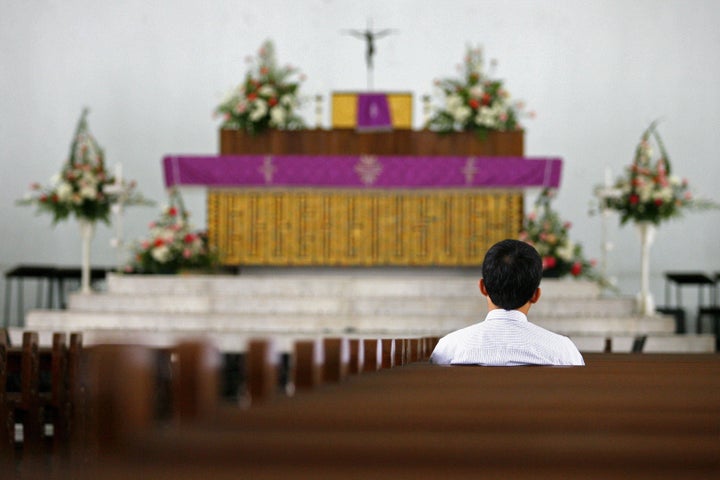
The Century did not attain its "most important organ of Protestant opinion" reputation on the basis of sheer numbers. That reputation rested instead on the magazine's successful bid to identify itself with a Christian intelligentsia defined by education, professionalism and progressive orientation.
In a 1928 letter to the editor of The Christian Century, Alfred H. Bartter of Gilman, Iowa, wrote, "I recently attended an ordination service at which this question was asked, 'What magazines do you take?' In his answer the candidate mentioned the Christian Century. When The Christian Century was named the questioner said, 'that will be enough, I am satisfied that you will do in the ministry.'"
One hopes that the candidate in this story possessed other qualifications as well. If the ordination committee mainly wished to gauge the man's progressive bona fides, though, "What magazines do you take?" was exactly the question to ask. The liberal wing of American Protestantism, now known as the mainline, did not have a name in 1928, but it did have a magazine.
The Christian Century was founded in 1884 as The Christian Oracle, a Disciples of Christ magazine in Iowa. It relocated to bustling Chicago in 1892 and adopted its triumphal new name in 1900. By 1908 it was bankrupt, with just 600 subscribers -- hardly an auspicious start for what Newsweek would call in 1947 "the most important organ of Protestant opinion in the world today."
A young minister named Charles Clayton Morrison bought the title at a sheriff's sale, hoping to continue its mission of contending for the modernist side in the Disciples' fundamentalist-modernist split. This mission included supporting a fellow Disciple on the faculty of the University of Chicago who questioned the veracity of biblical miracles. Morrison also pushed the Disciples to accept new members from other churches without insisting that they first be re-baptized by immersion.
Nearly a decade into his editorial tenure, Morrison noticed that the Century's readership had grown to include liberal churchmen outside the Disciples movement. To solidify this ecumenical shift, in 1917 he changed the magazine's tagline to "An Undenominational Journal of Religion." Soon afterward, with financial assistance from Disciples layman and vacuum magnate William H. Hoover, Morrison's small staff launched its first real circulation campaign. Their target audience: "the Christian intelligentsia of all the churches."
This group was sharply limited. Morrison had in mind college- and seminary-educated professionals who embraced, as he recalled in his autobiography, "the social implications of the teaching of Jesus, the new biblical scholarship, in general the liberal point of view and the undenominational character of the Christian Century." Further, by "all the churches," he actually meant only Protestant churches whose national leadership had articulated liberal convictions: Presbyterian, Congregational, Episcopal, Methodist, Disciples, northern Baptist and a few smaller bodies. Demographically, this audience was overwhelmingly white, male, employed by churches or other religious organizations, and weighted toward the urban northeast.
To attract such readers, the Century used what we would call today word-of-mouth marketing and targeted advertising. It exhorted its readers to share the magazine with their like-minded friends. It also placed ads in other Protestant periodicals and in mainstream opinion magazines including The Atlantic Monthly, Harper's, The Nation and The New Republic. These efforts increased the Century's circulation to about 35,000 in 1928. There it has more or less remained ever since, despite repeated attempts to double readership by some not-too-distant date.
Obviously, the Century did not attain its "most important organ of Protestant opinion" reputation on the basis of sheer numbers. That reputation rested instead on the magazine's successful bid to identify itself with a Christian intelligentsia defined by education, professionalism and progressive orientation. Perhaps few of the same people read the Century and the Atlantic or The New Republic, but the same type of people did, and some of the same people wrote for them as well. For example, Reinhold Niebuhr contributed frequently to the Century and TNR, while Martin Luther King Jr.'s "Letter from a Birmingham Jail" appeared in both the Century and the Atlantic.
When "mainline" emerged in 1960 as a label for liberal Protestantism, it, too, was identified with the Christian intelligentsia. The term, previously applied to the tony northwest suburbs of Philadelphia, appeared that year in a New York Times article contrasting moderate and liberal church leaders with "extreme economic and religious conservatives" who urged ministers to stop making political pronouncements and stick to the Gospel. The mainline leaders commanded the Times reporter's respect, while their opponents were derided as anti-intellectual, emotional-appeal, schismatic fundamentalists.
It's useful to recall this longstanding association between the Protestant mainline and the Christian intelligentsia as stories enumerating mainline decline pile up. Yes, the denominations Charles Clayton Morrison once envisioned as "all the churches" have sustained significant losses, with devastating consequences for their institutions and morale. Yet those churches continue to be overrepresented in Congress, The Christian Century remains the most widely held religious periodical in American libraries, and a degree from the University of Chicago Divinity School carries a lot more cachet than one from a Bible college. As long as those distinctions count, the mainline matters.
Elesha Coffman is assistant professor of church history at the University of Dubuque Theological Seminary.